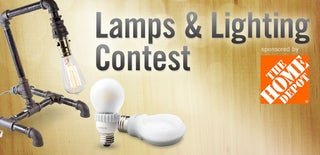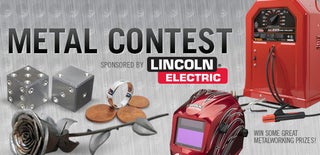Introduction: Modern Industrial Copper Room Lighting
My Step Daughter is starting a new restaurant and asked me to help out, as usual with projects like this there is little money for fancy extras but she does like to have special unique features that shows she puts in extra care. I was given the task of the Bathroom lighting initially there was just one fixture in the center of the ceiling which is not great to light two stalls and a sink area. It was not the most glamorous task but I was given free reign and a small budget. When I first looked at the room the plumber had just finished and there was still a couple of sections of copper pipe leaning against the wall. I loved how the color of the copper looked against the grey concrete walls and white textured ceiling. The other thing that needed to be done is to hide the seam between the ceiling and the wall. Usually people would just put molding to cover it but that is a bit ordinary.
Our solution was to use copper pipe as "Conduit" and run all the fixtures externally connected with the copper pipe. But not just run the copper pipe to the fixtures run it totally around the ceiling to also work as a molding to hide the ceiling / wall seam. The Fixtures would just be cheap outdoor "all weather" fixtures (from Home Depot).
Step 1: Measure 7 Times Cut Once...
In order to make this lighting work I needed to have a continuous band of copper pipe around the room where the wall meets the ceiling with 90 degree elbows at the corners. Then where lights would be placed a "T" would be inserted and a small pipe would come down from the ceiling to the correct light fixture height, also a feed needed to go across the ceiling to the center where the old fixture was to supply power. This meant a LOT of copper cuts as there were 4 corners, 3 lights and one feed line.
I used 3/4 inch copper pipe so I would have enough room for the wires plus it gave a better "presence" as a feature but the light fixtures we found only had a 1/2 inch threaded joint. This required us to use a 3/4" to 1/2" adapter and then a 1/2" pipe to threaded adapter. Add to this that the room was not square and you can see that there needed to be a lot of measuring and re-measuring.
Once cool thing is that since the fittings are so snug and the fixtures were to be attached to the wall we did not need to solder the joints like you would with water plumbing. I just fitted the pieces together and when it was installed and attached with the copper strapping fasteners nothing moved at all.
Step 2: Piping Electricity
Once all the pipes were cut I ran the coated electrical wire through the pipes on the ground. The section at the front of the Bathroom did not have wire in it so that was screwed to the ceiling so that there was a secure start when we started lifting the wired pipes around the rest of the walls. The wire actually held the joints together well enough that we could pick up one wall section at a time without the may pieces falling apart. A we went around we screwed it in place. The last wall was a bit tricky as we had to fit the final pipes together. Thankfully they we long enough that we could flex them enough to get the end into the "T" and as we pushed to the ceiling everything popped into place snuggly.
Once the Square was around the room I installed the "down" sections where each light would be placed.
Step 3: Adding Fixtures
At the end of the down pipes I put the adapters and screwed them into the lighting fixture box. These fixtures are made to be outdoors so will be perfect for a bathroom where there is moisture present. All I needed to do now is connect the wires, grounding everything as required and using the safety wire fasteners to join the like colored wires.
I did the Center ceiling box where the power is supplied last. While working on any powered system make sure you turn off the breaker and test to make sure the power is off before doing anything. I ran the old power wired through the bottom of the ceiling box, attached them to the lighting wires and then capped the box with a cover. At this point I made sure all pieces were secure around the room as I do not want pipe moving and rubbing the wire inside.
Step 4: We Have Light!
The last step is to adjust the light sockets (the fixtures allow you to point the lights anywhere you like). The put in light bulbs and turn on the power!.
We are still waiting on some Edison bulbs (they were backordered at the lighting supply store) but once I get them I will update the instructable with final photos (the bulbs in the photos were just old ones we had laying around).
While copper is expensive, we could use cheaper outdoor fixtures and still get a unique modern look that is both interesting and practical. The light shining up on the copper look amazing and really stands out on the concrete walls.
I know this is not a style for everyone but it could be used also in a rec room in the basement, cottage, pool house, workshop etc.. You can also use the metal "cage" lights that you see on boats for areas where you do not want an exposed bulb.

Participated in the
Lamps and Lighting

Participated in the
Metal Contest












